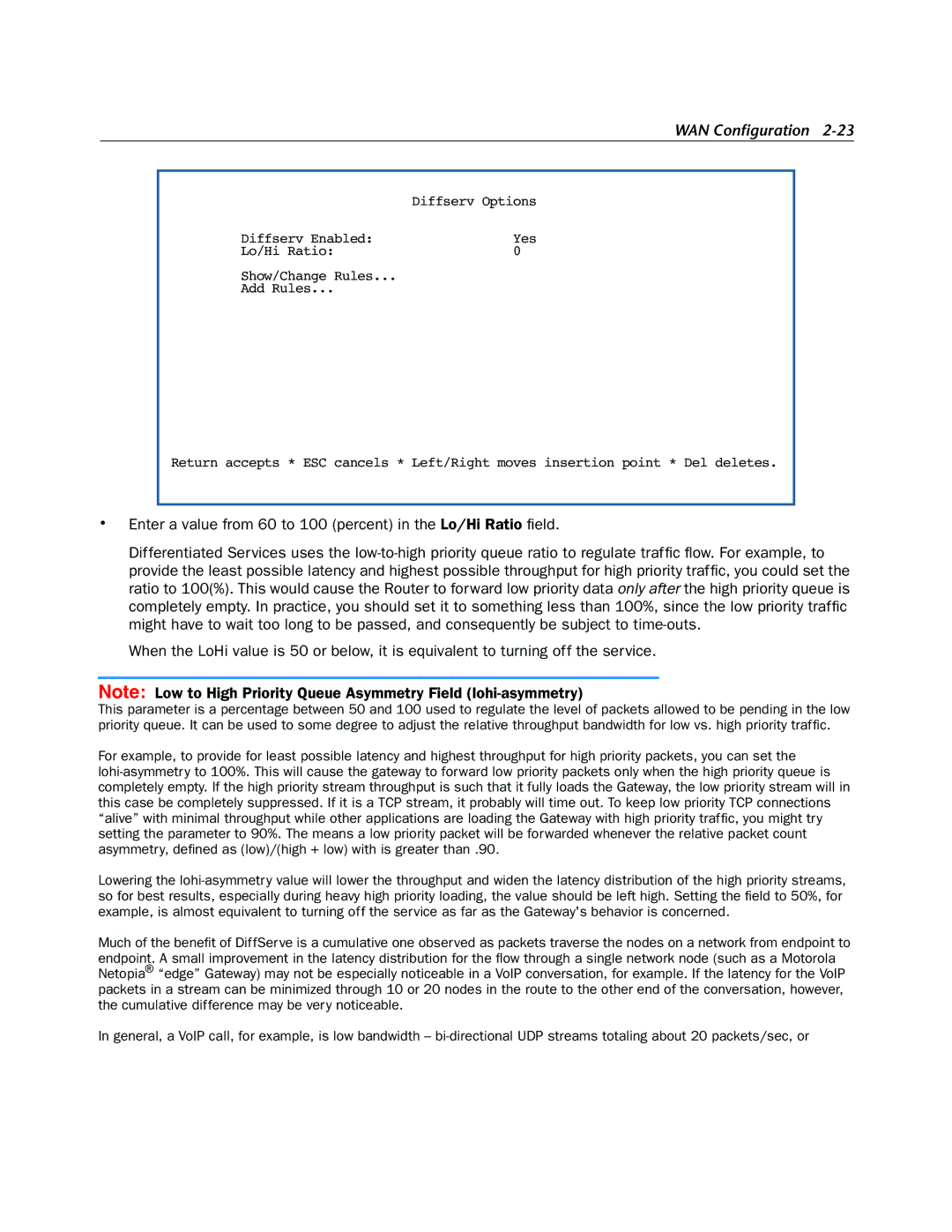WAN Configuration 2-23
| Diffserv Options |
Diffserv Enabled: | Yes |
Lo/Hi Ratio: | 0 |
Show/Change Rules... | |
Add Rules... | |
Return accepts * ESC cancels * Left/Right moves insertion point * Del deletes.
•Enter a value from 60 to 100 (percent) in the Lo/Hi Ratio field.
Differentiated Services uses the low-to-high priority queue ratio to regulate traffic flow. For example, to provide the least possible latency and highest possible throughput for high priority traffic, you could set the ratio to 100(%). This would cause the Router to forward low priority data only after the high priority queue is completely empty. In practice, you should set it to something less than 100%, since the low priority traffic might have to wait too long to be passed, and consequently be subject to time-outs.
When the LoHi value is 50 or below, it is equivalent to turning off the service.
Note: Low to High Priority Queue Asymmetry Field (lohi-asymmetry)
This parameter is a percentage between 50 and 100 used to regulate the level of packets allowed to be pending in the low priority queue. It can be used to some degree to adjust the relative throughput bandwidth for low vs. high priority traffic.
For example, to provide for least possible latency and highest throughput for high priority packets, you can set the lohi-asymmetry to 100%. This will cause the gateway to forward low priority packets only when the high priority queue is completely empty. If the high priority stream throughput is such that it fully loads the Gateway, the low priority stream will in this case be completely suppressed. If it is a TCP stream, it probably will time out. To keep low priority TCP connections “alive” with minimal throughput while other applications are loading the Gateway with high priority traffic, you might try setting the parameter to 90%. The means a low priority packet will be forwarded whenever the relative packet count asymmetry, defined as (low)/(high + low) with is greater than .90.
Lowering the lohi-asymmetry value will lower the throughput and widen the latency distribution of the high priority streams, so for best results, especially during heavy high priority loading, the value should be left high. Setting the field to 50%, for example, is almost equivalent to turning off the service as far as the Gateway's behavior is concerned.
Much of the benefit of DiffServe is a cumulative one observed as packets traverse the nodes on a network from endpoint to endpoint. A small improvement in the latency distribution for the flow through a single network node (such as a Motorola Netopia® “edge” Gateway) may not be especially noticeable in a VoIP conversation, for example. If the latency for the VoIP packets in a stream can be minimized through 10 or 20 nodes in the route to the other end of the conversation, however, the cumulative difference may be very noticeable.
In general, a VoIP call, for example, is low bandwidth – bi-directional UDP streams totaling about 20 packets/sec, or

